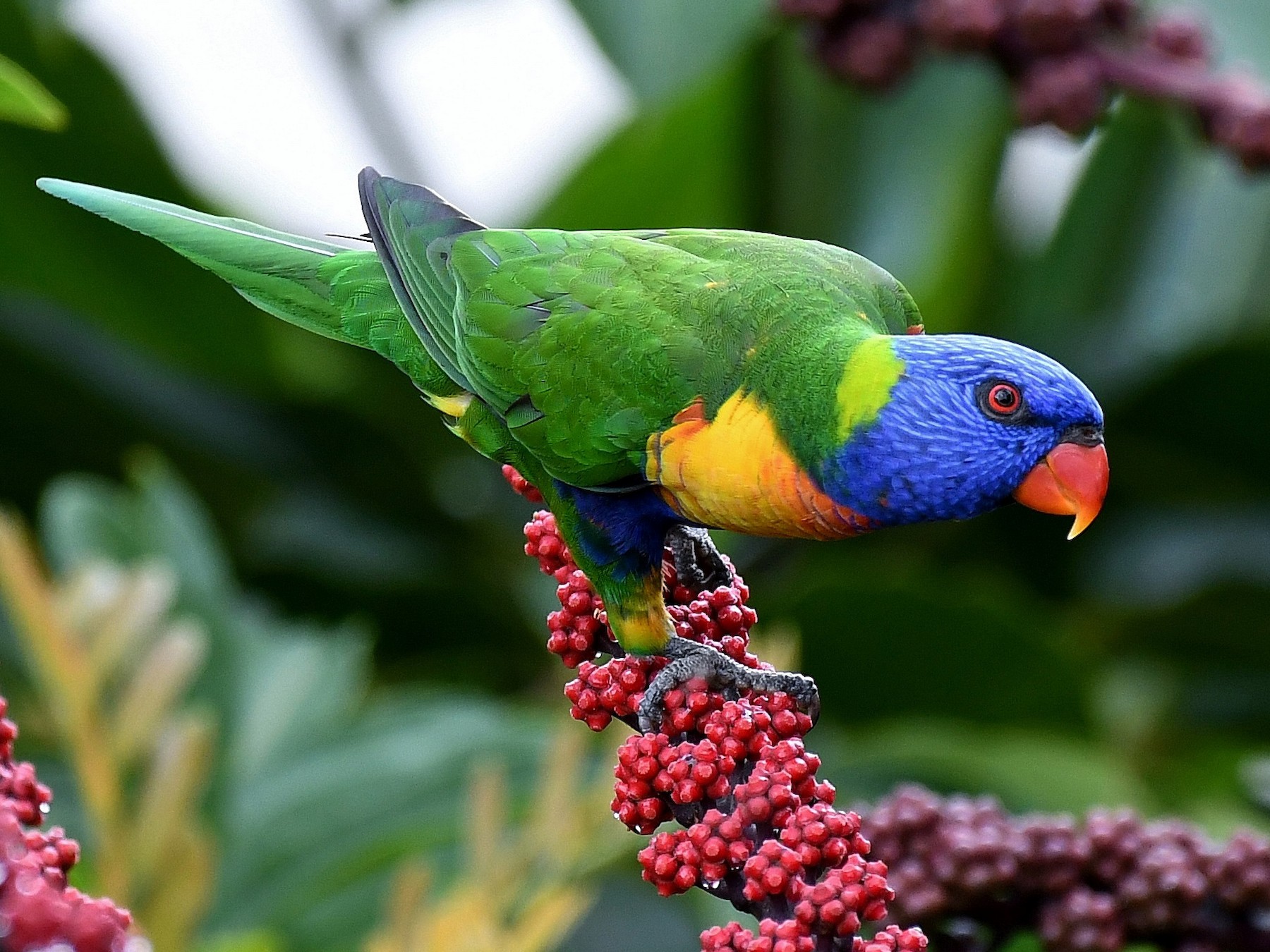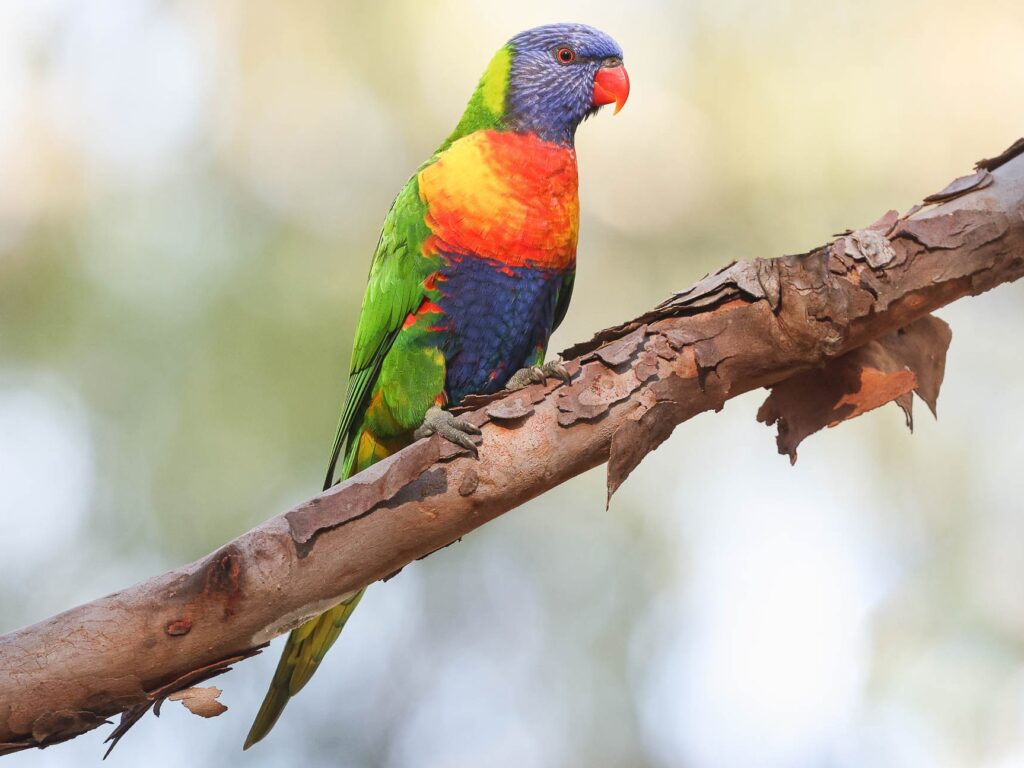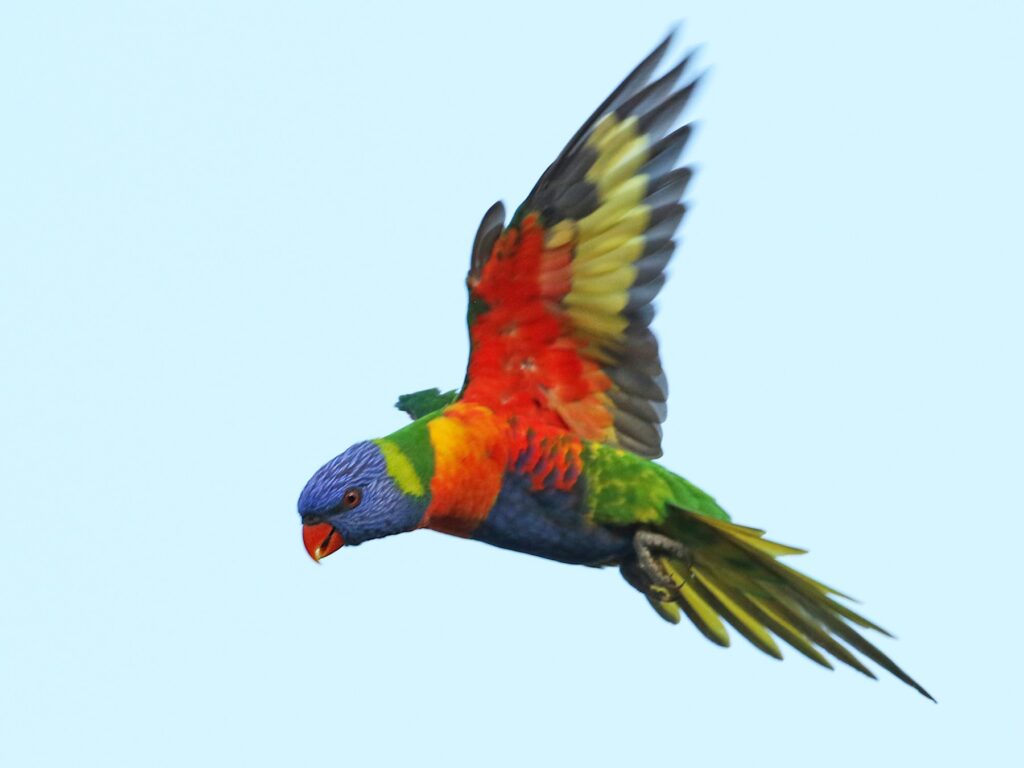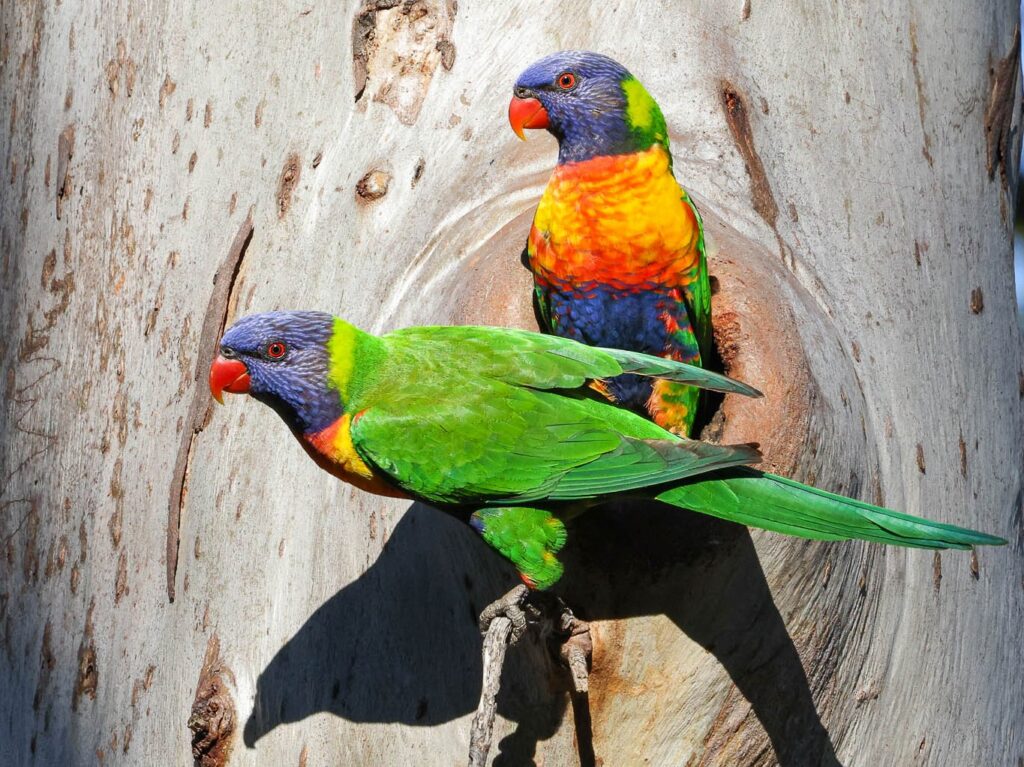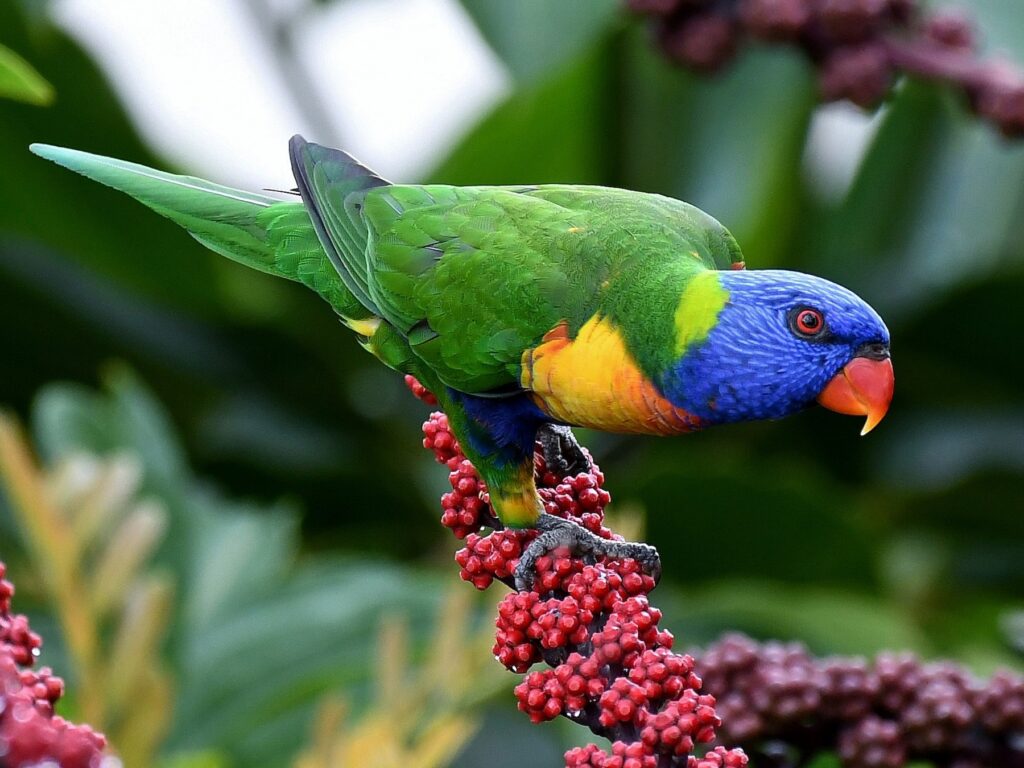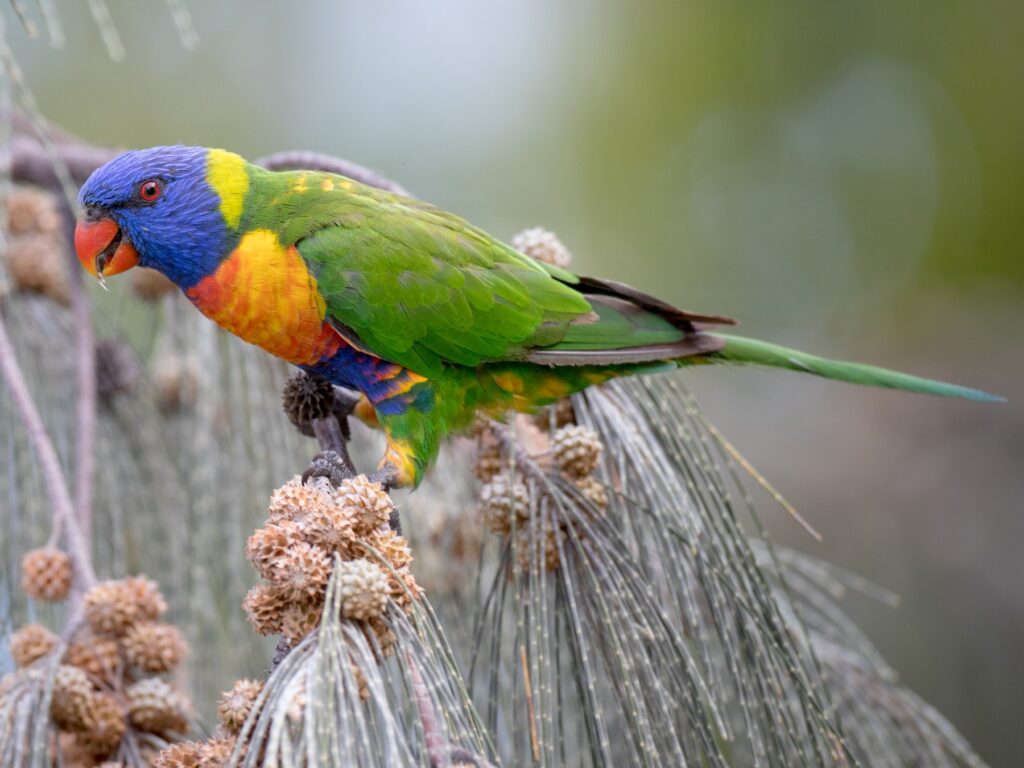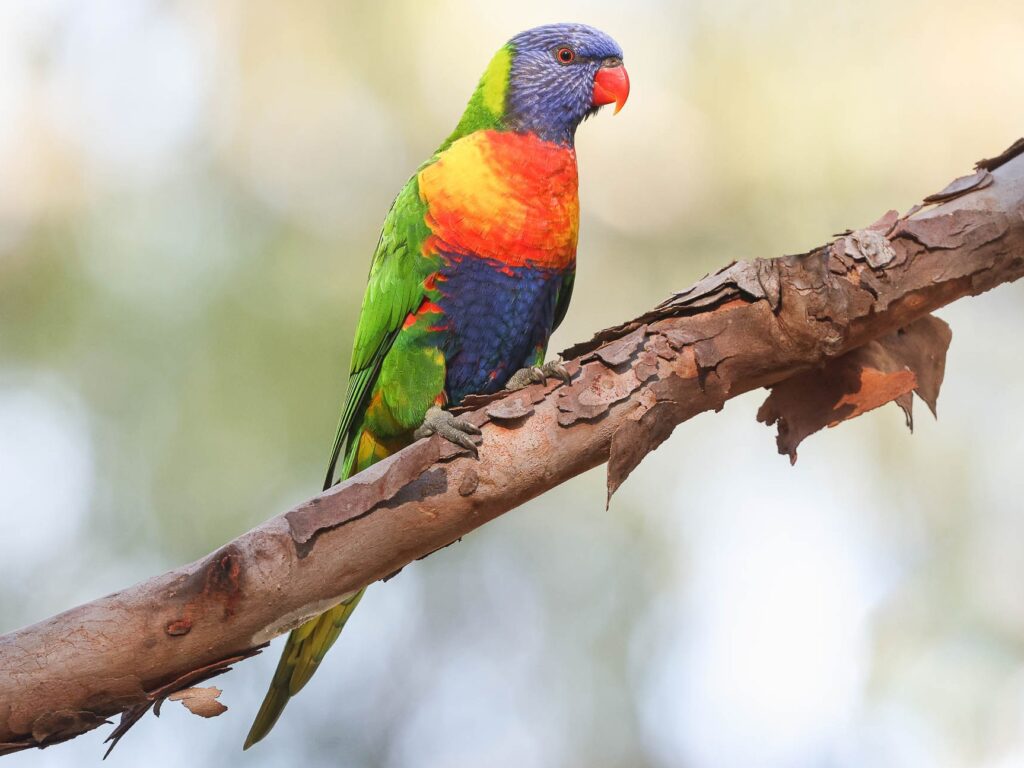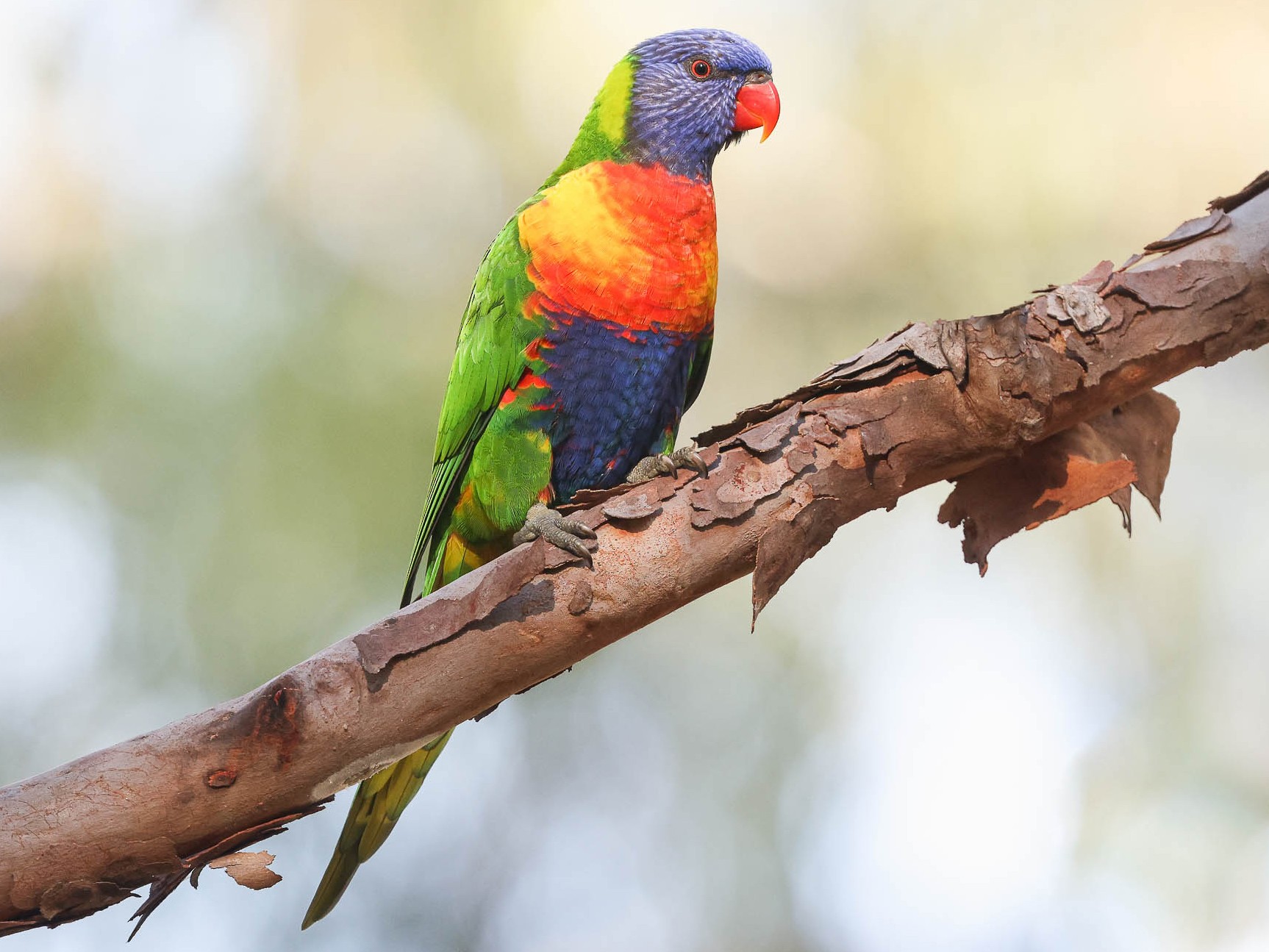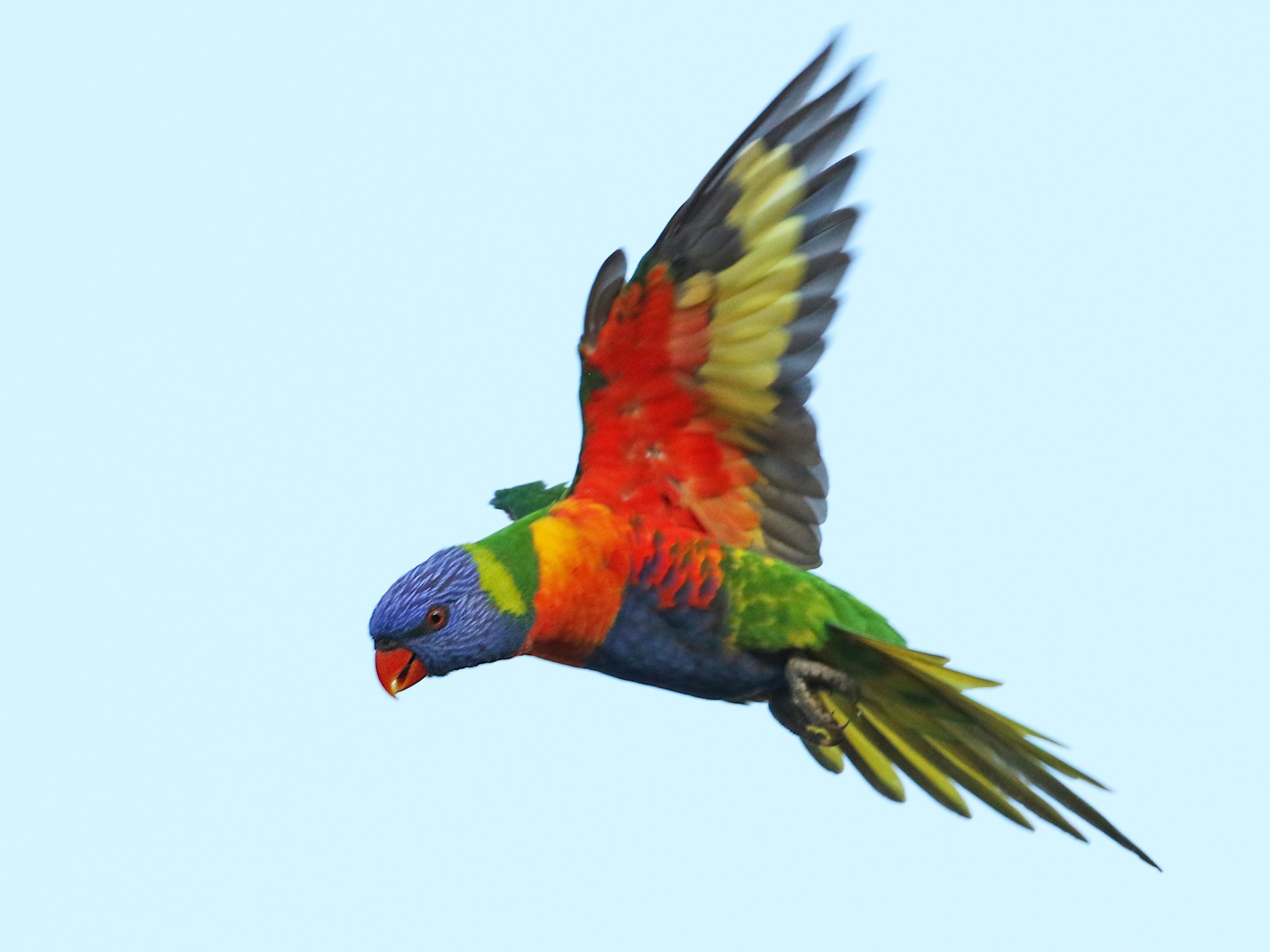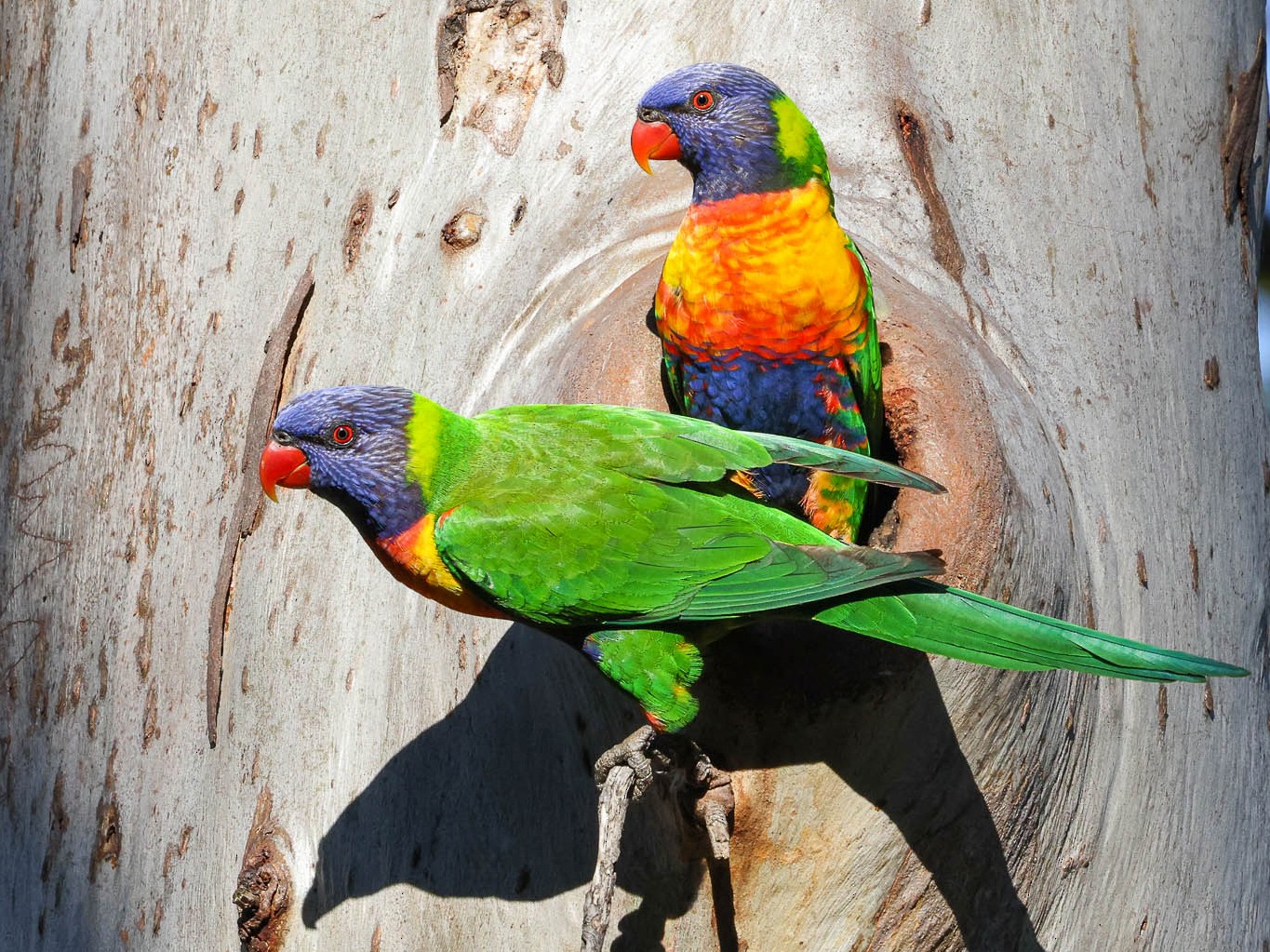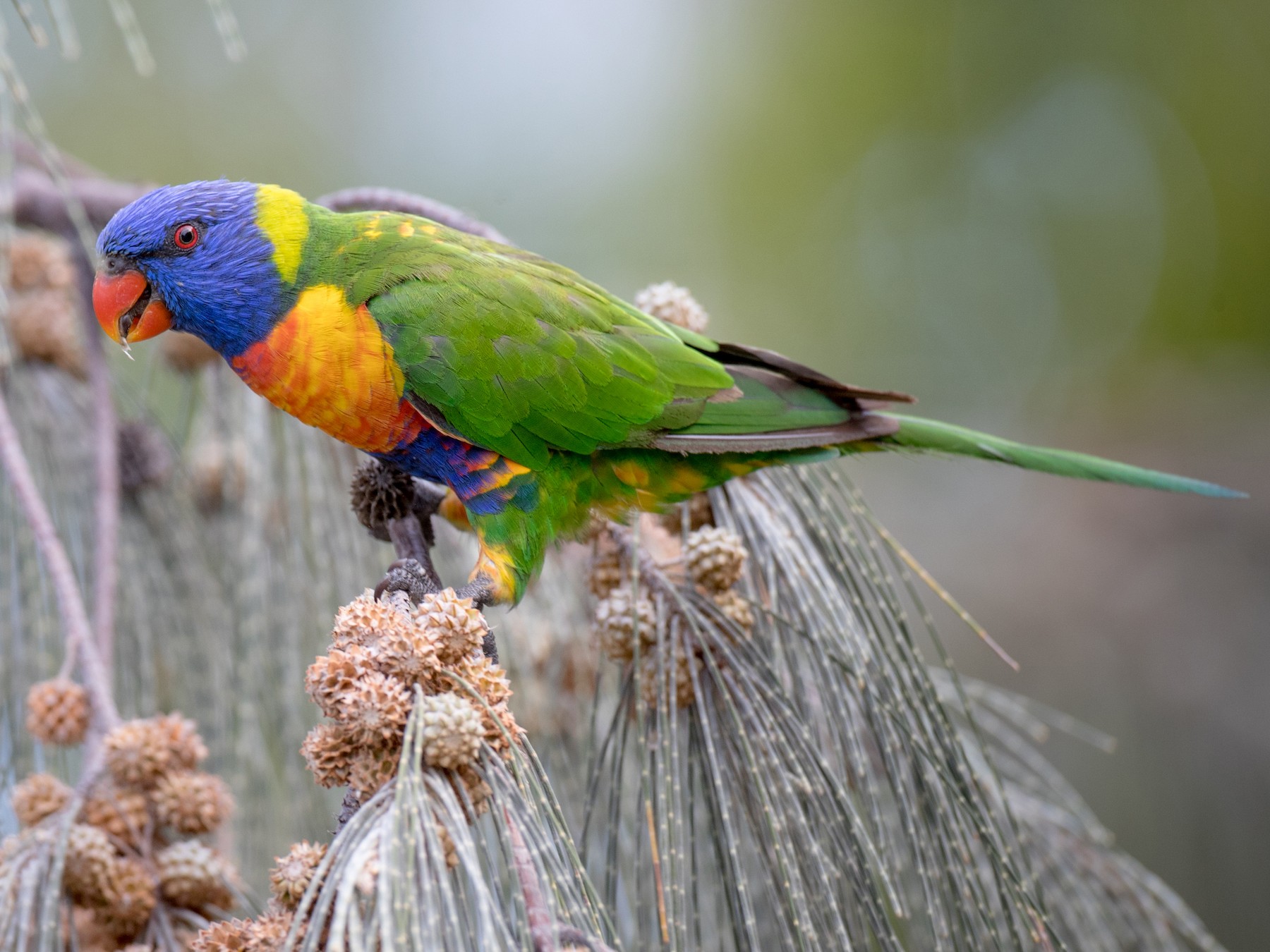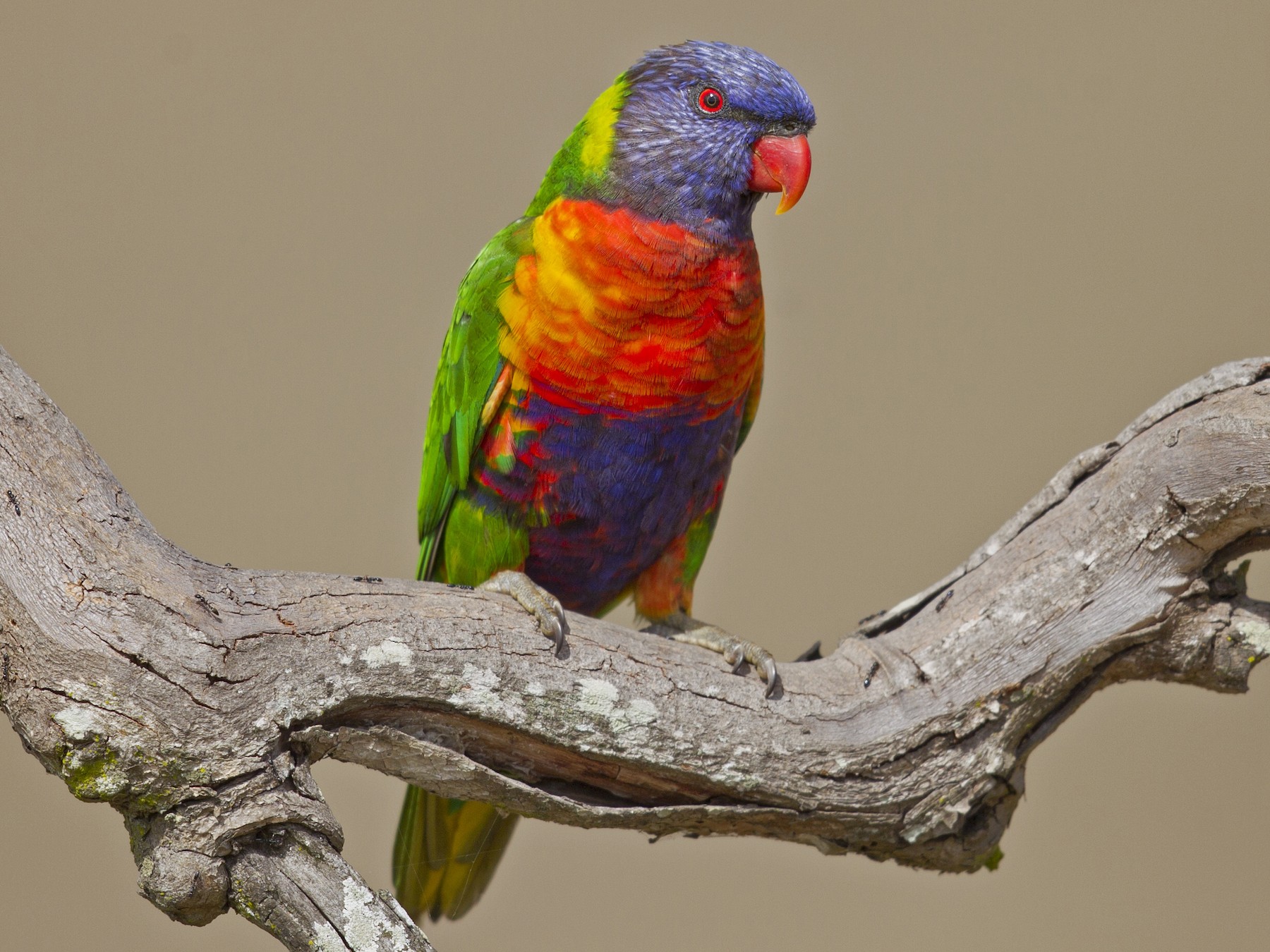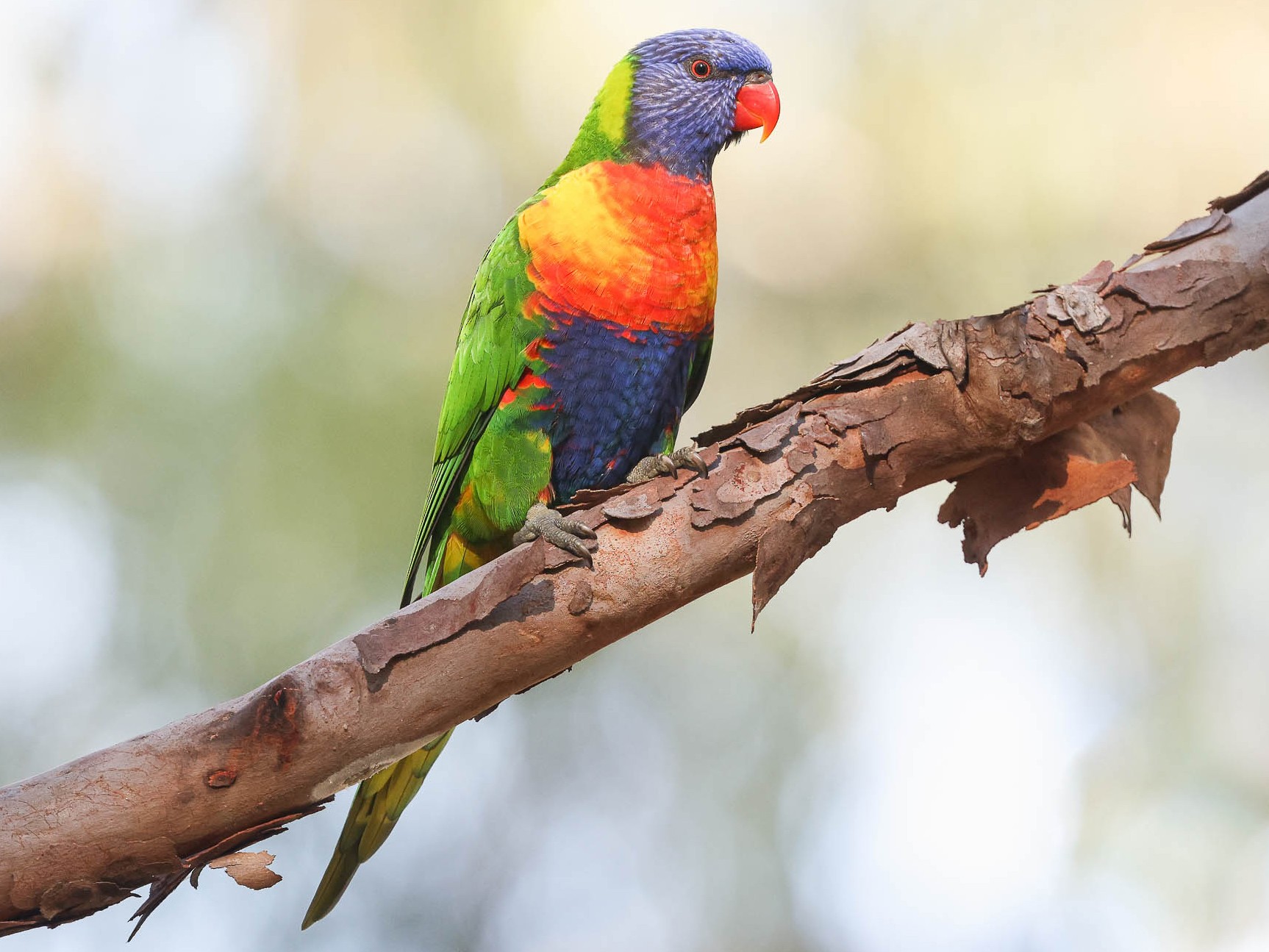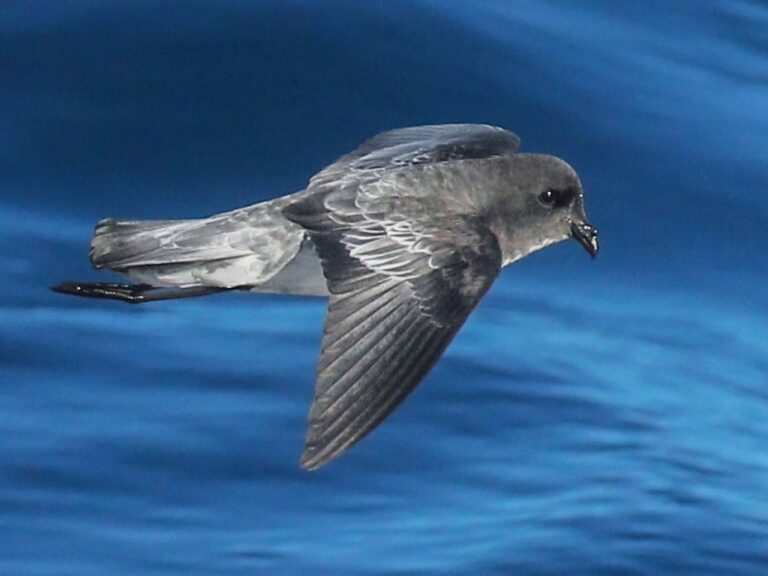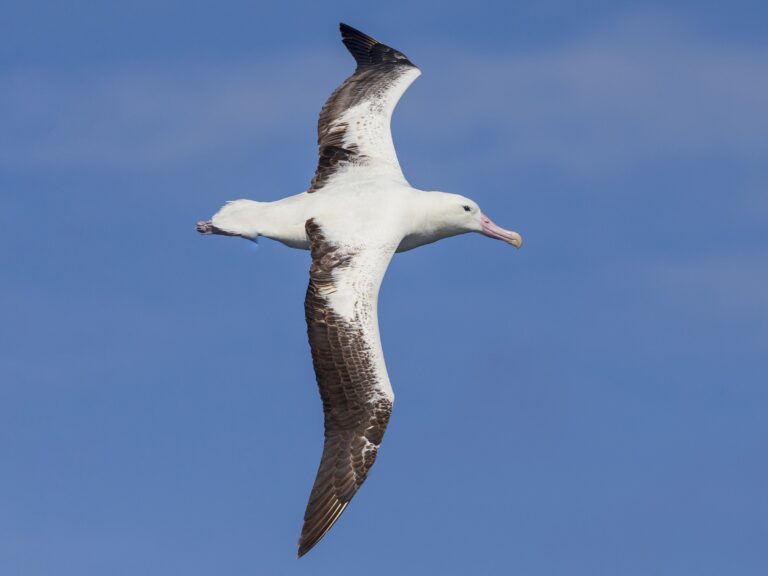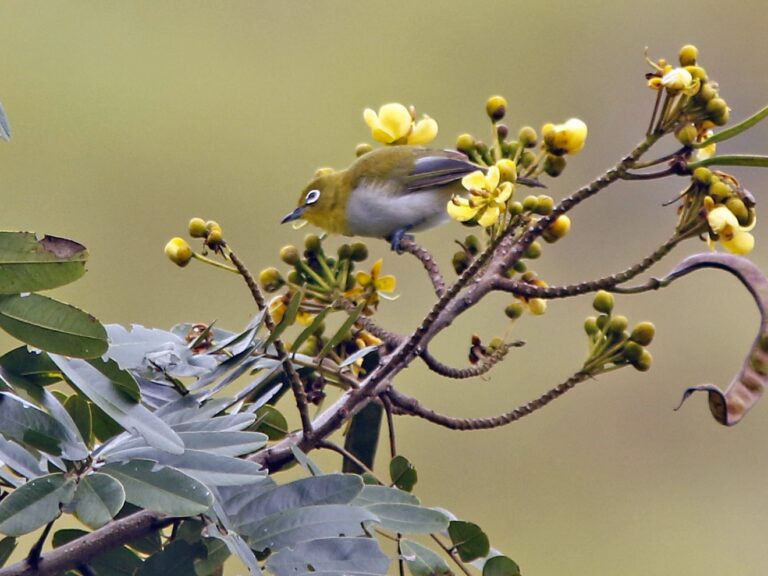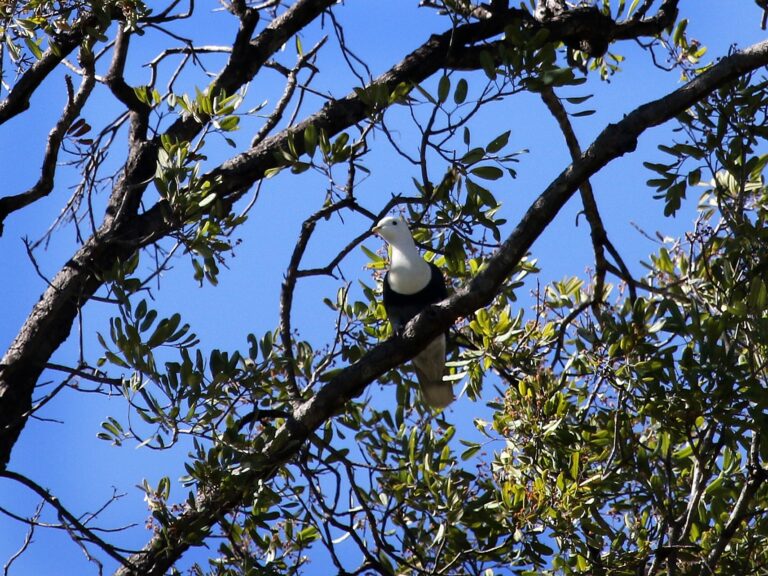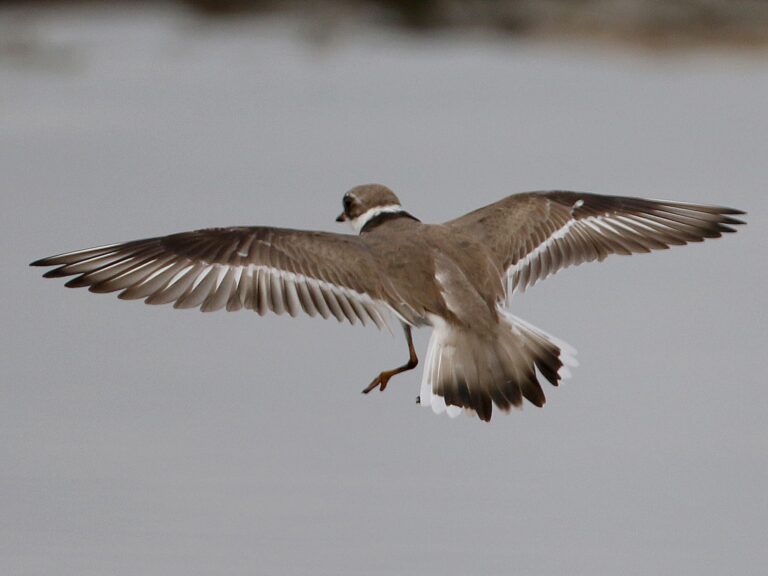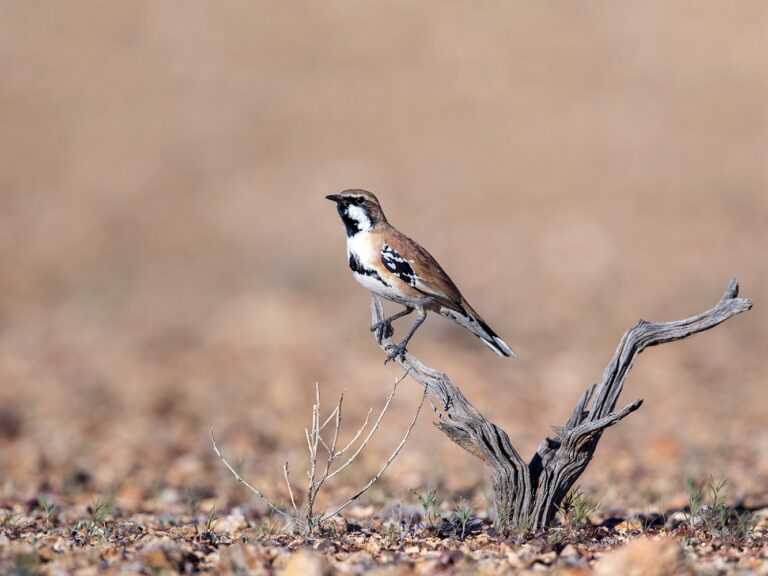Rainbow Lorikeet: A Fascinating Look at Australia’s Vibrant Feathered Acrobat
The rainbow lorikeet is a brightly colored parrot native to Australia, known for its vibrant feathers and lively personality. It is easily recognized by its bright red beak and a mix of blue, green, and orange plumage that makes it stand out in the wild.
This bird is very social and active, often found flying in groups along the eastern coast of Australia. These birds feed mainly on nectar and pollen, using their specialized brush-tipped tongues.
They play an important role in pollination, moving between flowers as they feed. Their energetic behavior and noisy calls make them a common sight in parks and gardens.
Rainbow lorikeets have adapted well to human environments.
Key Takeaways
- Rainbow lorikeets have distinct, colorful feathers and a bright red beak.
- They primarily eat nectar and help pollinate plants.
- They are social birds that thrive in groups and can adapt to urban areas.
Rainbow Lorikeet Overview
The Rainbow Lorikeet is a colorful parrot native to Australia, known for its vibrant feathers and lively behavior. It has distinct body features, bright colors, and a clear place in bird classification.
Physical Characteristics
The Rainbow Lorikeet is about 11 to 12 inches long from beak to tail. It has a strong, curved red beak perfect for feeding on nectar and fruit. Its body is medium-sized compared to other parrots. This bird has a slender body and long tail feathers.
It weighs around 100 to 180 grams. Both males and females share similar features, making it hard to tell them apart just by looking. Rainbow Lorikeets are active birds, often seen flying quickly or perching in groups. Their feet are zygodactyl, meaning two toes point forward and two backward, helping them grip branches well.
Coloration and Markings
The Rainbow Lorikeet stands out for its bright and varied colors. It has a deep blue or mauve head and chest. The belly area is also blue, blending into green wings and back feathers. Its neck features a greenish-yellow collar, adding to its vivid look.
The beak’s bright red color contrasts sharply with the blue head. The combination of green, blue, red, and yellow makes it one of the most colorful Australian birds. Both males and females share this mix of colors. The vibrant patterns help them blend into flower-filled forests while feeding on pollen and nectar.
Taxonomy and Classification
The Rainbow Lorikeet belongs to the family Psittaculidae, which includes many parrots native to the Asia-Pacific region. Its scientific name is Trichoglossus moluccanus. Within the parrot family, it is part of the lorikeet group, known for specialized brush-tipped tongues used to feed on nectar. This adaptation sets them apart from other parrots that eat seeds or nuts.
There are several subspecies of Rainbow Lorikeet in different parts of Australia and nearby islands. These subspecies vary slightly in color and size but share the same main features and diet. More on its classification can be found in this Rainbow Lorikeet Fact Sheet.
Habitat and Distribution
Rainbow lorikeets live in specific regions and thrive in a variety of treed environments. They can also be found outside their native range where they have been introduced.
Native Range
Rainbow lorikeets are native to the eastern and northern coasts of Australia. Their range extends from northern Queensland through New South Wales and Victoria, reaching as far south as South Australia. They are also naturally found in parts of Indonesia, Papua New Guinea, and several nearby islands such as the Solomon Islands and Vanuatu. This wide native range means they can adapt to many climates, from tropical to temperate.
Their natural distribution often overlaps with coastal areas and rainforest regions where food sources are abundant.
Typical Environments
Rainbow lorikeets prefer treed habitats that provide plenty of food and shelter. They are most commonly found in:
- Rainforests
- Coastal mangroves
- Woodlands
- Urban areas with many trees
They thrive in these environments because they feed mainly on nectar and pollen from flowering plants, fruits, and occasionally insects. Well-treed urban parks and gardens often attract them.
Introduced Populations
Rainbow lorikeets have been introduced to areas outside their native range in Australia. For example, they have established populations in Perth, Western Australia, where they were not originally found. Introductions often occurred through escaped or released pet birds. In these new regions, they sometimes compete with local bird species for food and nesting sites.
Their presence can affect native wildlife, and they are considered an invasive species in some places. Management efforts may be required to control their numbers and impact outside their natural habitats. For more detailed information, see the facts on Rainbow Lorikeet habitat and distribution.
Diet and Feeding Behavior
Rainbow lorikeets eat often and rely on a diet rich in liquids and natural sugars. Their eating habits are closely tied to their environment and physical adaptations.
Natural Diet
In the wild, rainbow lorikeets mostly eat nectar, pollen, and various wild fruits. These foods provide high amounts of water, sugar, and protein. The moisture content in their diet is important because it keeps them hydrated without needing much extra drinking water. They also eat flowers and occasionally insects for added protein.
Their feeding occurs frequently throughout the day, sometimes lasting three hours or more. In captivity, lorikeets need a wet diet that mimics their natural food, including specially made lory nectar mixes and fresh fruits. Offering multiple small meals (4-6 times daily) matches their high energy needs and keeps them active.
Role in Pollination
Rainbow lorikeets play a key role in pollination. As they feed on nectar and pollen, their brush-like tongues collect pollen. When they move from flower to flower, they transfer pollen, helping plants reproduce. This behavior benefits many flowering trees and shrubs, making lorikeets important for local ecosystems. Their pollination activity supports biodiversity and the regeneration of native plants.
Feeding Adaptations
Lorikeets have unique adaptations for their specialized diet. Their tongues have fine, brush-like filaments that help them soak up nectar and pollen easily. They also have strong, curved beaks for biting into fruits and flowers. This beak shape allows them to reach flower bases where nectar collects.
Because their diet is liquid-heavy, lorikeets drink water often if fed dry foods. Providing a moist, wet diet in care ensures they do not dehydrate. Their digestive system is adapted to process sugars from nectar quickly, giving them fast energy needed for their active lifestyle.
Breeding and Lifecycle
Rainbow lorikeets breed mainly in the spring and early summer months. Their breeding cycle involves specific behaviors from courtship through chick development.
They build nests in tree hollows and lay small clutches of eggs. Both parents take part in caring for the young.
Courtship and Mating
The courtship usually starts with loud calls and swooping flights to attract a mate. Males show off bright feathers and perform displays like head bobbing and wing flashing.
Pair bonds are strong and often last through the breeding season. Mating occurs once the pair has bonded.
Both birds may preen each other to strengthen their connection. Males become more protective, chasing off rivals. Sexual maturity is reached by about two years of age.
Nesting Habits
Rainbow lorikeets nest in hollows of tall eucalyptus or other native trees. They prefer holes high off the ground to avoid predators. The nest is usually not lined with soft material, relying on the hollow’s natural cavity. Breeding season in Australia ranges roughly from June to January.
Pairs can breed multiple times per year but typically focus on one clutch. Both birds share incubation duties and protection of the nest.
Eggs and Chick Development
A typical clutch contains 1 to 3 eggs, with 2 being most common. Eggs are white and smooth. Incubation lasts about 23 to 28 days, mainly handled by the female, though males assist. After hatching, chicks spend about 45 days in the nest.
Parents feed them regurgitated nectar and soft fruits. The young become independent after fledging but may stay with parents for a short time. Fertility lasts for most of the bird’s life following maturity. Details about breeding come from reliable sources such as the Australian Museum and breeding studies published in bird journals.
Conservation and Human Impact
The Rainbow Lorikeet faces several challenges from its environment and human activities. Its status varies by region, and it interacts with human industries in ways that can cause conflict.
Conservation Status
The Rainbow Lorikeet is often classified as an acclimatised or introduced species in some areas, such as parts of Australia outside its native range. It is not considered endangered globally but may have different protections or management rules depending on the location.
In regions where it is native, populations are generally stable. Conservation efforts focus more on managing its impact than on protecting the species. This shift reflects how it is sometimes viewed as a pest, especially where it competes with native bird species or disrupts local habitats.
Threats to Survival
Natural threats include predators like birds of prey and habitat loss due to urban development. In many places, the bigger concern is competition with native parrots for food and nesting sites. Human activity also plays a major role. The loss of natural tree hollows from logging and clearing reduces nesting options. Additionally, risks such as vehicle strikes and poisoning incidents contribute to local declines in some populations.
Interaction With Humans
Rainbow Lorikeets are known for damaging soft fruits such as apples and grapes. This causes significant economic impact on orchards and vineyards in areas where the birds are common. Methods to reduce damage include trapping and exclusion nets. They also attract attention in urban settings due to their bright colors and noisy behavior.
While some people enjoy watching them, others see them as a nuisance because of their loud calls and aggressive competition with native birds. More details on management options can be found in the Agriculture and Food document on Rainbow Lorikeet management.
Frequently Asked Questions
Rainbow Lorikeets need a special diet, regular care, and a suitable environment to thrive. They have unique behaviors and social needs. Understanding these details helps in keeping them healthy and happy.
What does a Rainbow Lorikeet’s diet consist of?
Rainbow Lorikeets mostly eat nectar and pollen. They also eat fruits like berries and apples. Their diet needs to be rich in sugars and vitamins to keep them energetic.
How can one properly care for a Rainbow Lorikeet?
They need a large cage or aviary to fly and play. Daily cleaning and fresh food are essential. Regular vet check-ups help maintain their health. Social interaction is important as they are active and intelligent birds. More care details are found on the Rainbow Lorikeet advice page.
What is the typical habitat for a Rainbow Lorikeet?
They live in coastal and forested areas with plenty of flowering trees. These birds need access to trees with nectar sources.
Can Rainbow Lorikeets mimic human speech?
Rainbow Lorikeets can mimic sounds, but their speech ability is less clear compared to some other parrots. They may learn simple words or sounds if trained.
Are Rainbow Lorikeets considered social or friendly birds?
Rainbow Lorikeets are very social and enjoy interacting with humans and other birds. They form strong bonds and can be playful and curious.
What measures are in place to protect Rainbow Lorikeets if they are endangered?
Rainbow Lorikeets are not currently endangered but are protected by wildlife laws in some areas. Conservation efforts focus on preserving their natural habitats.
